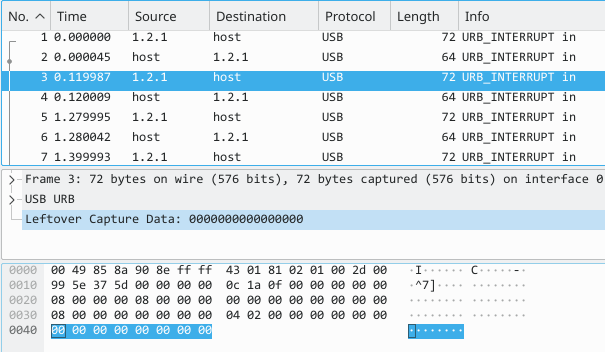

By using two taps you are able to monitor inbound data that is passed through one tap, and outbound data that is passed through the other tap.

This example uses a single tap, using multiple taps will provide access to the full-duplex data separately. Passive monitoring or port mirroring is needed because most networks use switches which isolate the network traffic and this does not allow for the entire network to be monitored. We are curious why the packets contain four characters in ’s ATmega Wireshark captures - why not 1, 2, or 10? Is this something that can be controlled by the programmer, or is it fixed by the protocol and/or the FTDI chip? If you have the answer, let us know in the comments below.Making a passive network tap can be an easy and inexpensive undertaking as shown in this Instructable. On any serial connection between two computers, when a virtual USB device is used on both sides of the link (no actual serial signals involved), the serial baud rate is a fictional thing - data transfer speeds depends on USB alone. This concept doesn’t apply only to Arduino boards, of course.

On the Arduino Due, the USB connects directly to the SAM3X8E processor. For instance, on the Nano there is an FT232RL between the USB connector and the microprocessor (on an Arduino Uno board, a small ATMEGA8U2 is used instead of an FTDI chip, but the concept is the same). While the Arduino family of boards connect to your computer using a USB virtual serial port, the ATmega ones have an actual serial connection on-board. If you look under the hood, the answer is hiding in plain sight. He sets up an experiment with a simple sketch on both boards and uses Wireshark to evaluate the results.ĭata is sent in the USB packets in groups of four characters on the ATmega-based boards, but the entire string is put in a packet on the Due board. Wonders why the SerialUSB() function on the Cortex M3-based Arduino Due is so much faster than Serial() on the Uno or Nano, and shares his observations in this short video.


 0 kommentar(er)
0 kommentar(er)
